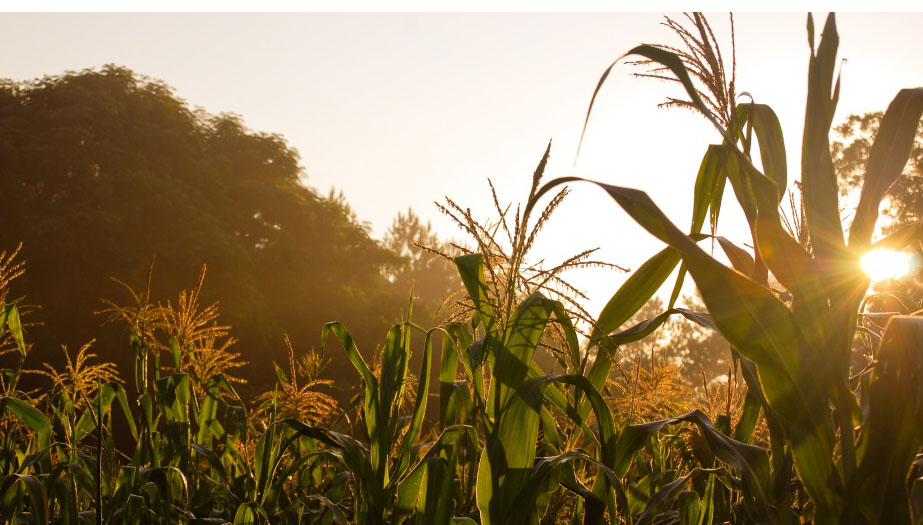Whitetails are found in all nooks and crannies across the country. They inhabit nearly all types of environments and terrain. Whitetail have evolved into a highly-adaptable critter that will call nearly anything ‘home.’ From canyons to marshes and everything in-between – deer will seek refuge wherever they find a comfort zone, and they find great comfort in standing cornfields. Corn provides deer not only food, but also cover for bedding. They’ll often times rarely leave this haven throughout season – or at least during daylight. Maybe it’s time you put your stalking gear on and sneak into shooting range on a buck bedded in a cornfield. If you want to get out of the stand and be mobile, you may want to try to hunt in standing corn. Unpicked cornfields offer new challenges to anxious hunters waiting to punch out their tag. Below you will find a few tips:
1. Watch the Weather The weather majorly impacts your ability to creep into bow killing distance of a bedded animal. Defeating the whitetail’s keen sense of hearing is extremely difficult, near impossible. That is why it’s critical to hunt cornfields when it’s windy, rainy, or snowing. The wind acts as a mask to reduce your sound of approach. The fluttering and rustling leaves are on your side. Light drizzling rain will help soak the sound of your approach. A dry snow will also help dampen the sound of your stalk and help hide your movements. A steady snowfall acts as a slight camouflage that helps hide your stalking.
2. Use a Topo Map Even in cornfields or stretches of ag, deer will often times bed on the highest point of terrain. Whether it’s along a wooded finger that stretches into the corn or a high spot in the field, be sure to focus on these locations.
3. Seeing is Believing There are thousands of endless cornrows that stretch hundreds of acres from woodlot to woodlot. This makes spotting deer a very difficult task. Always remember to carry a high-quality set of binoculars. This will greatly increase your odds of pinpointing specific parts of the animal, such as a tail, leg, or ear. Deer bed parallel to the rows of corn, so hunters must be aware of positioning themselves accordingly. I’ve found using a small bucket truly a charm. Bringing a bucket will give you a slight height advantage to peer through several rows ahead. The combination of a bucket, binoculars, and a patient pace will aid in your advantage.
4. The Corn Stalk This is where mastering the art of stalking comes into play. Always hunt a cornfield with the wind blowing parallel to the rows. You never want to hunt a cornfield when the winds is drifting your scent across the rows because deer will smell you coming before you even see them. Start at the beginning of the field and walk across the rows on the field’s downwind side. Moving crosswind, slowly peek into each row and look both ways. Continue this slow and steady rate until you reach the other side of the field. Once you reach the side edge, move twenty yards up and cut across the rows again. You will continue this process until you spot a deer. If you happen to catch a glimpse and have a clear shot, take it immediately before it bolts. If not, carefully back up and sneak toward the animal until you have a clear shot. Time is always on your side, be sure to use it. Hunting within the confinements of a cornfield with a bow is a strategy to try when the woodland isn’t producing. Deer are often caught off guard because they rarely spot hunters sneaking up on them in a cornfield setting. Corn stalking will give you a new challenge to the incredible art of hunting.

